25 Weekly Meal Plans That Will Actually Work for Your Real Life

I used to stare into my empty fridge every Tuesday night, ordering Chinese food again, wondering why I couldn’t just get my act together with cooking. Sound familiar? That moment of takeout shame is what finally pushed me to figure out this whole meal planning thing – and honestly, it changed everything about how I handle food, time, and money.
According to Nutrition.gov, meal planning and grocery shopping resources help you stick to your budget and eat healthy at home. It wasn’t some overnight miracle, but after a few weeks, I wasn’t stressed about dinner anymore, I had more money in my bank account, and I stopped feeling like garbage by 3 PM every day.

Table of Contents
- What Actually Matters When Picking a Meal Plan
- Quick & Simple Solutions: 5 Plans for Beginners
- Health-Focused Approaches: 5 Plans That Actually Help
- Family-Friendly Options: 5 Plans That Keep Everyone Happy
- Specialty Diet Solutions: 5 Plans for Specific Needs
- Advanced Culinary Adventures: 5 Plans for When You Get Fancy
- How These Plans Stack Up in Real Life
- Which Plan Actually Fits Your Life?
- The Bottom Line
TL;DR
- Time is everything – some plans take 15 minutes, others will eat your whole weekend
- Money matters – budget-friendly options exist, but specialty ingredients get expensive fast
- Skill level is real – don’t jump into molecular gastronomy if you burn toast
- Health benefits vary wildly – some plans are just convenient, others might actually change how you feel
- Family dynamics are complicated – what works for you might not work for your picky kid
- Flexibility keeps you sane – rigid plans usually fail when life gets messy
- Simple plans are great for beginners but might get boring
- Health-focused plans can be amazing but cost more and take more work
- Specialty diets deliver results but can be socially awkward and pricey
- Advanced cooking is fun but requires serious time and money investment
What Actually Matters When Picking a Meal Plan
Picking the wrong meal plan is worse than having no plan at all. You’ll get frustrated, overwhelmed, and be back to ordering pizza within a week. The key is being brutally honest about your actual life, not the life you think you should have.
Time is the big one. Some meal plans expect you to spend your entire Sunday prepping, while others focus on getting dinner on the table in under 20 minutes. Be real about your schedule – if you’re working 50-hour weeks and shuttling kids around every night, that elaborate Sunday prep session probably isn’t happening.
This gets even trickier when you realize that something as simple as how to cook delicious oatmeal everytime can become your meal planning lifesaver if breakfast fits your schedule better than elaborate dinners.
Take my friend Sarah – she’s a marketing director with two kids. She started with this fancy Mediterranean plan that required 3 hours of Sunday prep and 45 minutes of cooking every night. After two weeks of stress and reverting to pizza delivery, she switched to 15-minute meals. Six months later, she’s actually cooking consistently and has slowly added some of those Mediterranean ideas as she got more confident.
Your health stuff matters. Managing diabetes is different from trying to lose weight, which is different from dealing with food allergies. Your meal plan needs to work with your body’s actual needs, not just what sounds good on Instagram.
Money is a real factor. Those fancy organic ingredients might align with your values, but they’ll stress you out financially if you’re not prepared. Factor in both what ingredients cost and how much food you might waste while learning new recipes.
| Factor | Beginner Plans | Health-Focused Plans | Family Plans | Specialty Diet Plans | Advanced Plans |
|---|---|---|---|---|---|
| Time Investment | 15-30 min/meal | 45-60 min/meal | 30-45 min/meal | 60-90 min/meal | 2-4 hours/meal |
| Weekly Budget (Family of 4) | $60-80 | $100-140 | $75-100 | $120-180 | $150-250 |
| Skill Level Required | Basic knife skills | Intermediate techniques | Family-friendly methods | Specialized knowledge | Advanced techniques |
| Equipment Needed | Standard kitchen tools | Some specialty items | Kid-friendly tools | Specific diet tools | Professional equipment |
| Flexibility Rating | High | Medium | High | Low | Very Low |
Your cooking skills are what they are. Some meal plans assume you can julienne vegetables and understand cooking techniques that might be completely foreign to you. Start where you actually are, not where you think you should be.
Family dynamics complicate everything. Feeding picky kids is different from cooking for roommates with different dietary restrictions. Your meal plan needs to work for everyone under your roof, or it’s not going to last.
Life happens. Travel, social dining, unexpected work stuff, and schedule changes will test how flexible your plan is. Really rigid approaches usually fall apart when real life intervenes.

Quick & Simple Solutions: 5 Plans for Beginners
Sometimes you just need food on the table without drama. These meal plans cut out all the complicated stuff while still keeping things tasty and reasonably healthy. I’ve tried all of these during particularly crazy periods in my life, and they’ve saved me from countless takeout disasters.
1. The 15-Minute Miracle Plan
Monday starts with sheet pan salmon and whatever vegetables you can find – everything goes on one pan, into the oven, and you’re done in 15 minutes. Tuesday is pasta with store-bought pesto and that pre-cooked chicken you can grab from most grocery stores. Wednesday flips the script with breakfast for dinner – scrambled eggs and avocado toast hit different when you’re tired.
Thursday uses rotisserie chicken for an easy salad with bagged greens. Friday celebrates surviving the week with black bean and cheese quesadillas. Weekends are for leftovers or simple sandwiches.
This works really well if you need some wins in the kitchen to build confidence. I’ve watched friends go from ordering pizza four nights a week to actually cooking using exactly this approach.
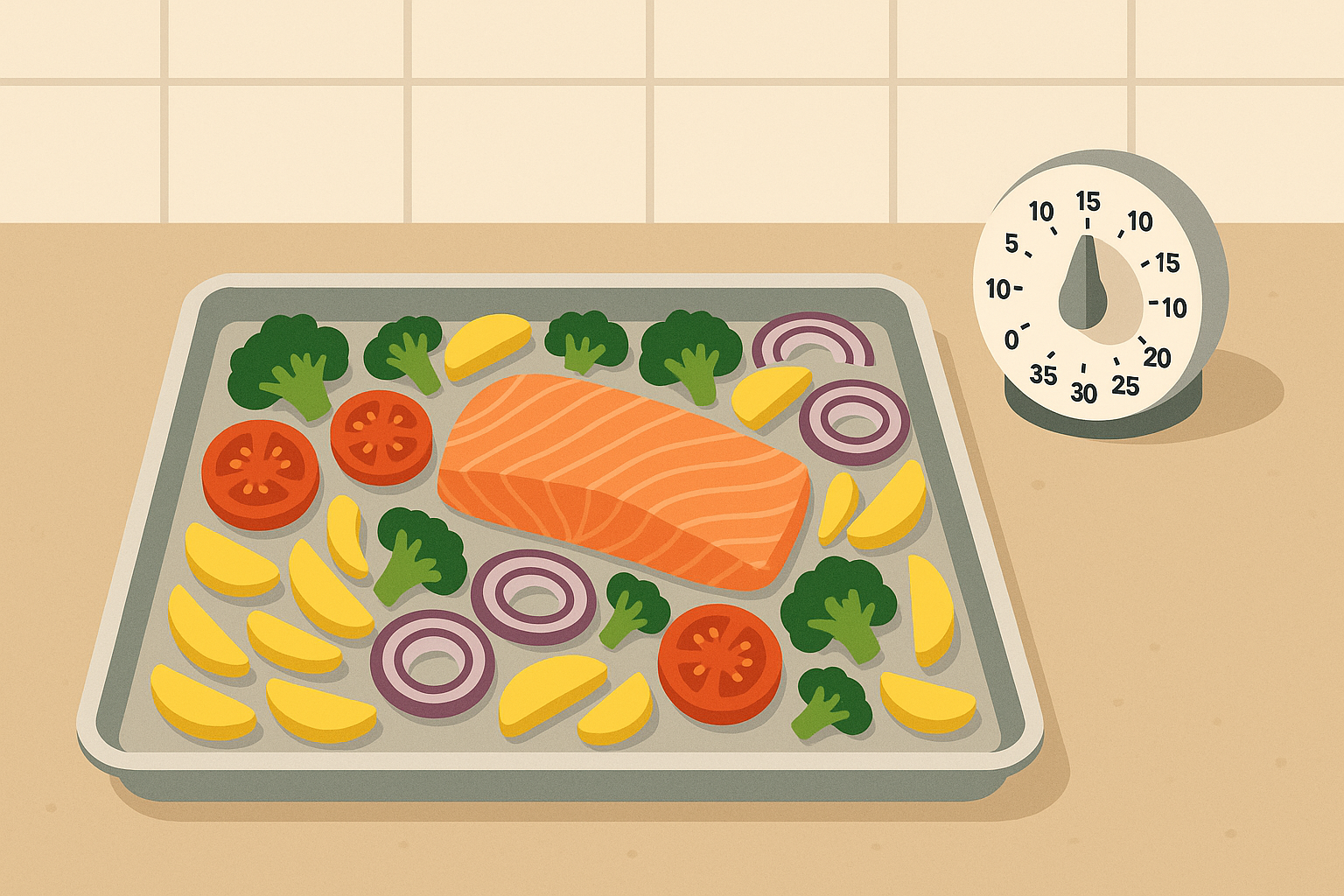
2. One-Pot Wonder Plan
Cleanup becomes almost non-existent when everything cooks in one pot. Monday starts with chicken and rice cooked together with vegetables and broth. Tuesday brings pasta with marinara sauce, ground turkey, and spinach all simmered in the same pot.
Wednesday is beef stew where everything goes into one pot and comes out as comfort food. Thursday delivers vegetable curry with chickpeas and coconut milk. Friday wraps up with loaded baked potato soup that requires minimal chopping and maximum satisfaction.
3. Freezer-to-Table Plan
Your freezer becomes your best friend with this one. Batch cooking on weekends sets you up for easy weeknight dinners. Sunday prep involves making big batches of chili, soup, and casseroles that freeze well. Throughout the week, you’re just reheating and adding fresh stuff. Monday might be frozen chili with fresh cornbread. Tuesday could be frozen soup with a side salad. The beauty is having homemade meals ready faster than delivery.
4. No-Cook Summer Plan
Heat waves and broken ovens don’t have to ruin your eating. Monday is Greek salad with chickpeas and feta. Tuesday brings gazpacho with crusty bread and hummus. Wednesday delivers turkey and avocado wraps with fresh fruit. Thursday showcases caprese salad with mozzarella and basil. Friday celebrates with a build-your-own sandwich bar using quality deli meats and fresh vegetables.
5. Microwave & Air Fryer Plan
Small spaces and limited equipment don’t have to limit you. Monday starts with microwave-steamed vegetables and air fryer chicken thighs. Tuesday features baked sweet potatoes (microwave) topped with air fryer chickpeas. Wednesday brings microwave rice bowls with air fryer salmon. Thursday delivers air fryer vegetables with microwave quinoa. Friday wraps up with air fryer pizza using naan bread and your favorite toppings.
Health-Focused Approaches: 5 Plans That Actually Help
Food can be medicine when you plan it right. These approaches treat your kitchen like a pharmacy, using ingredients to support specific health stuff. I’ve personally tried versions of these during different health challenges, and the results often surprised me.
6. Anti-Inflammatory Weekly Plan
Monday starts with a golden turmeric smoothie packed with spinach, mango, and ginger – your morning dose of anti-inflammatory stuff. Lunch is a quinoa bowl with roasted vegetables and tahini dressing, while dinner brings wild-caught salmon with steamed broccoli and sweet potato.
Tuesday continues with chia seed pudding, berries, and walnuts for breakfast. A big salad with mixed greens, avocado, and olive oil dressing for lunch, followed by lentil and vegetable curry with brown rice for dinner.
Wednesday keeps going with green tea and overnight oats with ground flaxseed. Bone broth-based vegetable soup for lunch, while grass-fed beef stir-fry with colorful vegetables rounds out the day.
This aligns with research showing that 5 steps to reducing inflammation in your diet can actually make a difference when you stick with it.
My friend Maria, who’s 45 and deals with rheumatoid arthritis, tried this for 12 weeks. She tracked her joint pain and got blood work done throughout. By week 8, her morning stiffness was way better, and her inflammation markers improved significantly. That golden turmeric smoothie became her non-negotiable morning thing, and she noticed the biggest improvements on days when she stuck to the anti-inflammatory spices.

7. Mediterranean Longevity Plan
The Mediterranean approach has kept entire cultures healthy for centuries. Monday begins with Greek yogurt topped with nuts and honey, followed by chickpea salad with olive oil and herbs for lunch. Dinner features grilled sardines with roasted vegetables and whole grain bread.
Tuesday starts with overnight oats made with olive oil and fresh fruit. Lunch brings lentil soup with hummus and vegetables. Dinner showcases baked cod with Mediterranean herbs, quinoa, and a big salad dressed with extra virgin olive oil.
8. Plant-Based Protein Power Plan
You can get plenty of protein without meat when you know how to combine things. Monday features a protein smoothie with hemp seeds, spinach, and plant-based protein powder. Lunch brings a Buddha bowl with quinoa, black beans, and tahini dressing. Dinner delivers lentil “meatballs” with marinara sauce over zucchini noodles.
Tuesday starts with chia pudding topped with nuts and seeds. Lunch features a chickpea salad sandwich on whole grain bread. Dinner brings tempeh stir-fry with brown rice and steamed vegetables.
9. Gut Health Reset Plan
Your gut health affects everything from mood to immunity, and this plan works well with understanding 5 simple ways to beat bloat and improve digestion for overall digestive wellness.
Monday begins with bone broth and fermented vegetables. Lunch features a salad with sauerkraut and olive oil dressing. Dinner brings slow-cooked chicken with roasted root vegetables and kombucha as a drink.
10. Hormone-Balancing Plan
Hormone balance starts in the kitchen. Monday features avocado and eggs for healthy fats, followed by a lunch with plenty of fiber and protein. Dinner includes wild-caught fish with cruciferous vegetables that support hormone stuff.
Tuesday emphasizes seeds and nuts for breakfast, a protein-rich lunch, and dinner featuring grass-fed beef with sweet potatoes for sustained energy.
Family-Friendly Options: 5 Plans That Keep Everyone Happy
Family meal planning requires diplomacy skills alongside cooking ones. These plans keep everyone fed and mostly happy. I’ve learned that the key isn’t making everyone love every meal – it’s making sure everyone can find something they’ll eat at each meal.
11. Kid-Approved Hidden Veggie Plan
Monday brings spaghetti with meat sauce, but the sauce has pureed carrots, zucchini, and bell peppers that completely disappear into the familiar flavors. Tuesday features “loaded” baked sweet potato fries with turkey chili where vegetables are finely diced and blend right in.
Wednesday delivers homemade chicken nuggets with cauliflower mac and cheese – comfort food that happens to pack serious nutrition. Thursday continues with mini meatballs served over zucchini noodles with marinara sauce.
Friday celebrates with pizza night using cauliflower crust and vegetable toppings that kids can help choose. Weekends become family cooking projects – homemade pancakes with fruit or build-your-own tacos where everyone customizes their meal.
Sunday prep focuses on pureeing and preparing hidden vegetables for the whole week. This turns your meal planning into a stealth nutrition delivery system that even the pickiest eaters will accept.

12. Allergy-Friendly Family Plan
Food allergies don’t have to mean boring food. Monday features rice bowls with grilled chicken and vegetables, using coconut aminos instead of soy sauce. Tuesday brings dairy-free pasta with olive oil, garlic, and nutritional yeast.
Wednesday delivers gluten-free tacos using corn tortillas with seasoned ground turkey. Thursday features baked salmon with roasted vegetables and quinoa. Friday wraps up with homemade pizza using gluten-free crust and dairy-free cheese alternatives.
13. Budget Family Feast Plan
Feeding a family well on a tight budget requires strategy, not sacrifice. Here’s what you’re actually looking at money-wise:
| Weekly Budget Breakdown | Cost | Meals Covered | Cost Per Serving |
|---|---|---|---|
| Protein Sources | $25 | 14 servings | $1.79 |
| Vegetables & Fruits | $20 | 28 servings | $0.71 |
| Grains & Starches | $12 | 28 servings | $0.43 |
| Dairy & Eggs | $10 | 21 servings | $0.48 |
| Pantry Staples | $8 | Multiple meals | $0.29 |
| Total Weekly Budget | $75 | 28 meals | $2.68 |
Monday starts with eggs and toast for breakfast, bean and rice bowls for lunch, and slow cooker chicken with vegetables for dinner. Tuesday features oatmeal with bananas, leftover chicken in wraps, and bean-based chili with cornbread. Wednesday brings scrambled eggs with vegetables, soup made from chicken bones, and pasta with simple tomato sauce. The secret is buying whole chickens, dried beans in bulk, and seasonal produce.
14. Picky Eater Peace Plan
Mealtime battles drain everyone’s energy. Monday presents deconstructed tacos where each family member builds their own using the same base ingredients. Tuesday features pasta bar night with multiple sauce options and add-ins.
Wednesday brings baked potato bar with various toppings. Thursday offers stir-fry components served separately so everyone can choose their combinations. Friday celebrates with homemade pizza where each person tops their own section.
15. School Week Survival Plan
School schedules create chaos, but your meal planning doesn’t have to. Sunday prep includes washing and chopping vegetables, cooking grains in bulk, and preparing grab-and-go breakfast options.
Monday morning features overnight oats ready in mason jars. Lunch boxes get packed with hummus, vegetables, and whole grain crackers. Dinner becomes slow cooker magic with minimal evening effort.
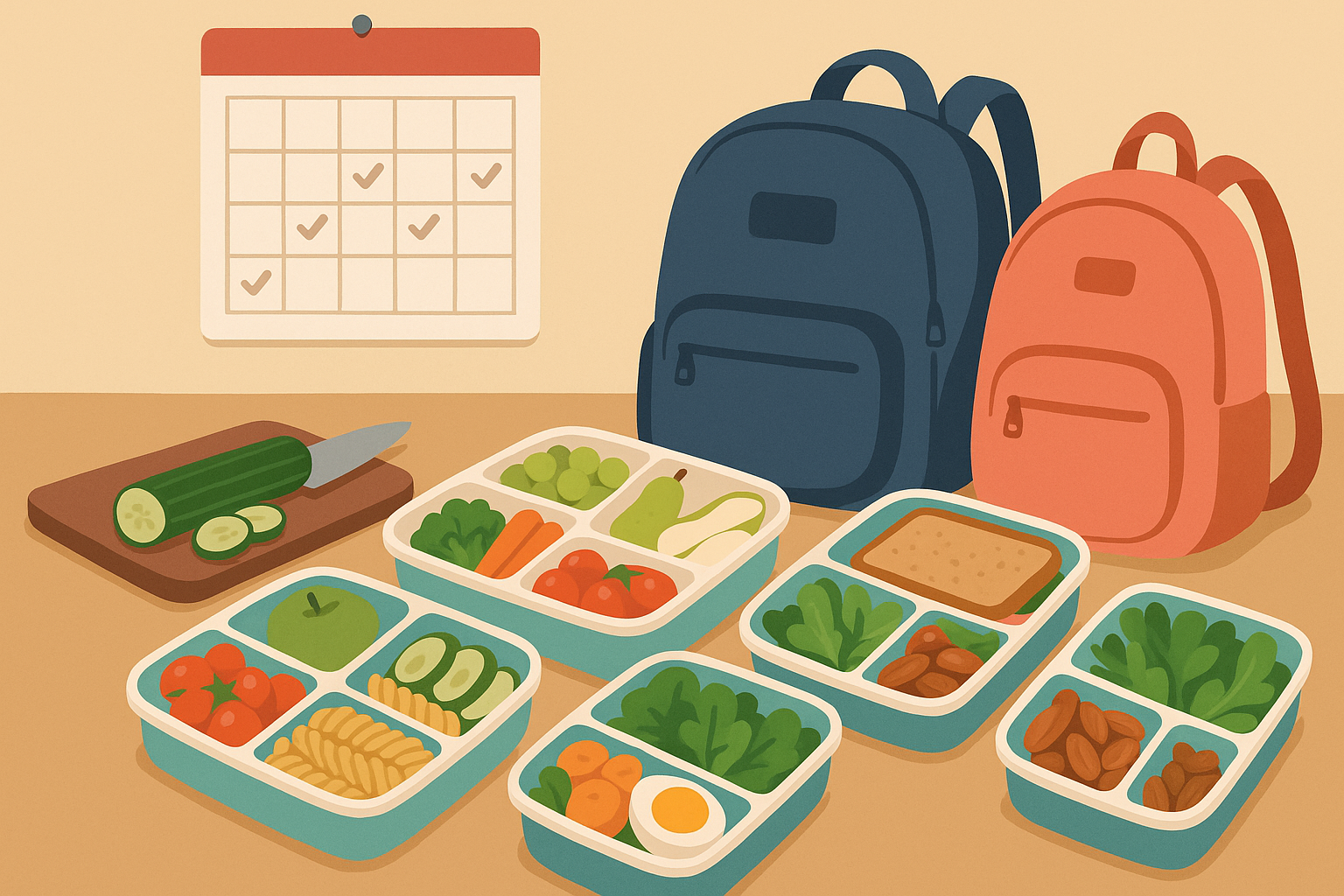
Specialty Diet Solutions: 5 Plans for Specific Needs
Specialty diets require precision and commitment. These meal plans provide the structure needed for success with targeted eating approaches. I’ve helped friends through several of these transitions, and the key always comes down to preparation and having backup options ready.
16. Ketogenic Weekly Plan
Monday begins with bulletproof coffee and scrambled eggs cooked in butter with spinach. Lunch features avocado chicken salad in lettuce wraps, while dinner brings ribeye steak with sautéed mushrooms and asparagus. Macadamia nuts provide the day’s snack.
Tuesday continues with a keto smoothie made from avocado, coconut milk, protein powder, and MCT oil. Zucchini noodles with pesto and grilled chicken handle lunch, followed by baked salmon with Brussels sprouts cooked in bacon fat. Cheese and olives round out the day.
Each day maintains the strict macro tracking while providing satisfying, flavorful meals that support ketosis.
Success with this often depends on understanding how to find your carb tolerance with the keto diet in 3 easy steps to figure out your individual approach.
My buddy David, a software engineer, used this ketogenic plan to lose 35 pounds in 4 months while managing type 2 diabetes. He tracked his ketones daily and found that the butter coffee kept him from being hangry until lunch. His doctor was pretty happy with his blood work after a few months, and he was able to reduce his medication under medical supervision. The key was meal prepping the avocado chicken salad in bulk and always having compliant snacks available during his long coding sessions.
17. Whole30 Compliant Plan
Whole30 strips away everything potentially inflammatory, leaving only whole, unprocessed foods. Monday starts with sweet potato hash with eggs and avocado. Lunch brings a massive salad with grilled chicken and olive oil dressing. Dinner features roasted pork tenderloin with roasted vegetables.
Tuesday begins with compliant smoothie bowls topped with coconut flakes and berries. Lunch showcases lettuce wraps filled with turkey and vegetables. Dinner delivers grass-fed beef with cauliflower mash and steamed broccoli.
18. Intermittent Fasting 16:8 Plan
This changes when you eat, not necessarily what you eat. The eating window runs from 12 PM to 8 PM, with the first meal being a substantial lunch featuring protein, healthy fats, and vegetables.
This works best when combined with understanding ladies intermittent fasting heres how to do it for gender-specific considerations.
Dinner becomes the bigger meal of the day, incorporating complex carbohydrates and additional protein to sustain the upcoming fast. During fasting hours, you stick to water, herbal teas, and black coffee.
19. Paleo Performance Plan
Paleo principles meet modern performance needs. Monday features sweet potato and egg breakfast, followed by grass-fed beef salad with mixed greens for lunch. Dinner brings wild-caught salmon with roasted vegetables and avocado.
Tuesday starts with coconut flour pancakes topped with berries. Lunch showcases chicken and vegetable soup. Dinner delivers pork chops with cauliflower rice and sautéed spinach.
20. DASH Diet Plan
High blood pressure responds well to dietary changes. Monday begins with oatmeal topped with berries and nuts. Lunch features a large salad with grilled chicken and low-sodium dressing. Dinner brings baked fish with quinoa and steamed vegetables.
Tuesday starts with Greek yogurt parfait with fruit. Lunch showcases lentil soup with whole grain bread. Dinner delivers lean turkey meatballs with brown rice and roasted vegetables.

Advanced Culinary Adventures: 5 Plans for When You Get Fancy
Cooking becomes art when you push beyond basic nutrition. These meal plans challenge your skills while expanding your culinary horizons. I’ve tried each of these during different phases of my cooking journey, and they’ve taught me techniques I still use today.
21. Global Cuisine Explorer Plan
Monday transports you to Italy with homemade pasta and seasonal ragu that simmers for hours. Tuesday shifts to Thailand with green curry, jasmine rice, and fresh herbs that require trips to Asian markets.
Wednesday brings Mexican complexity with mole poblano – a sauce with over 20 ingredients that takes most of the day to prepare properly. Thursday explores Indian flavors through tandoori chicken with homemade naan and dal.
Friday concludes with French sophistication via coq au vin with roasted root vegetables. Weekends become exploration time for fermentation projects or artisanal bread-making.
This transforms your meal planning into a passport, requiring extensive research and ingredient sourcing for authentic results.
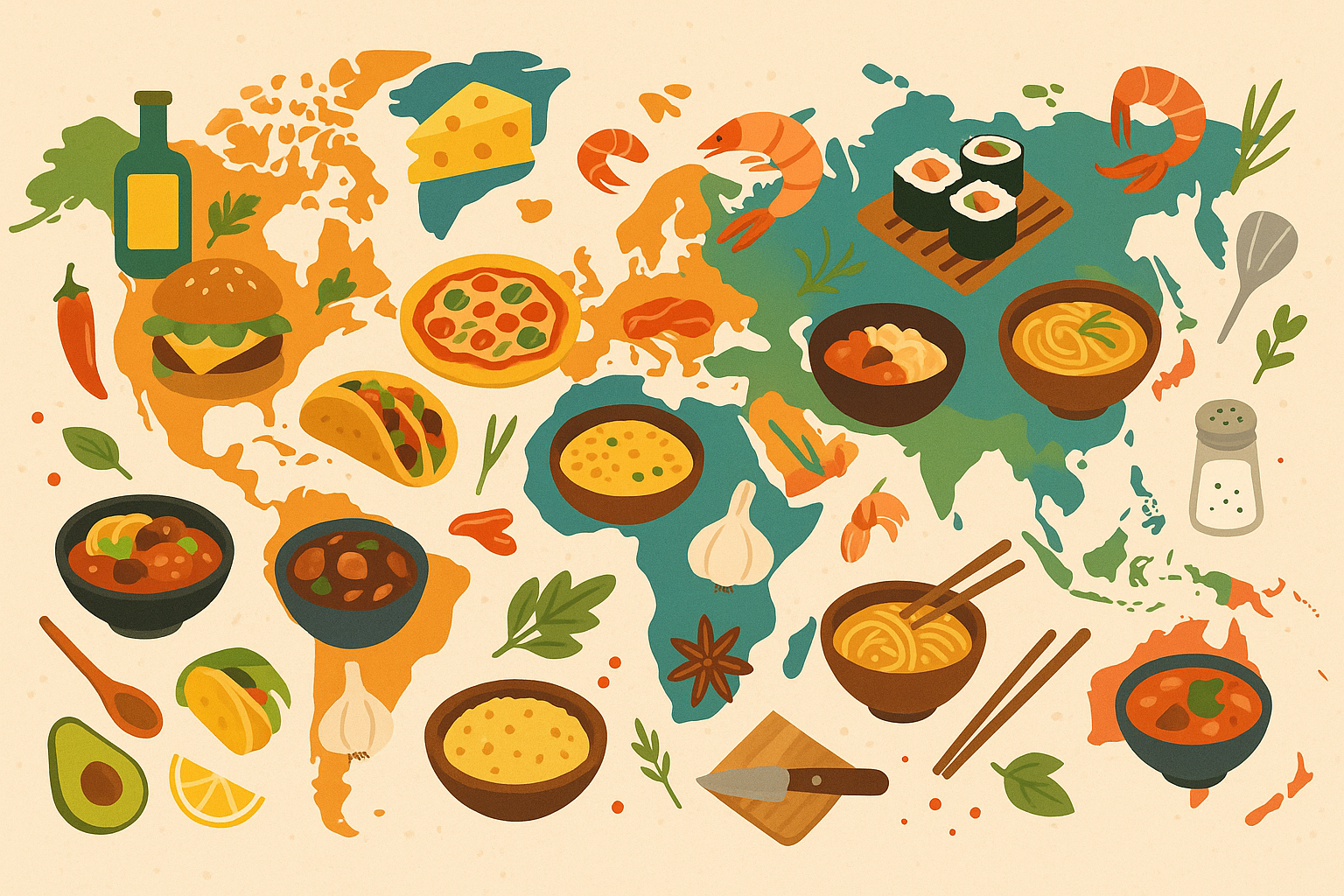
22. Seasonal Farm-to-Table Plan
Your menu becomes a reflection of your local ecosystem. January might feature braised short ribs with winter root vegetables and preserved lemons. Summer emphasizes fresh tomato gazpacho with basil oil and grilled peaches with burrata.
Fall brings butternut squash soup with toasted pumpkin seeds and apple cider reduction. Spring celebrates with pea shoots, fresh herbs, and the first asparagus of the season. Each week requires farmers market visits and menu adjustments based on availability.
23. Zero-Waste Meal Plan
Food waste becomes a thing of the past when you plan strategically. Monday uses whole chickens where bones become stock, skin becomes crispy garnish, and scraps feed compost.
Tuesday transforms vegetable peels into chips, stems into pesto, and leaves into salads. Wednesday repurposes yesterday’s bread into croutons, breadcrumbs, and bread pudding. You need creativity and flexibility as you adapt recipes based on what needs using.
24. Fermentation Focus Plan
Week one becomes establishment week – starting sourdough starter and beginning sauerkraut fermentation on Monday. Tuesday brings water kefir and beet kvass projects. Wednesday focuses on kimchi and vegetable lacto-fermentation.
Thursday starts kombucha second fermentation with seasonal fruits, while Friday tackles rejuvelac for cheese-making. Weekends handle fermented salsa and pickled seasonal vegetables.
Ongoing maintenance includes daily starter feeding, monitoring fermentation progress, and troubleshooting issues as they arise.
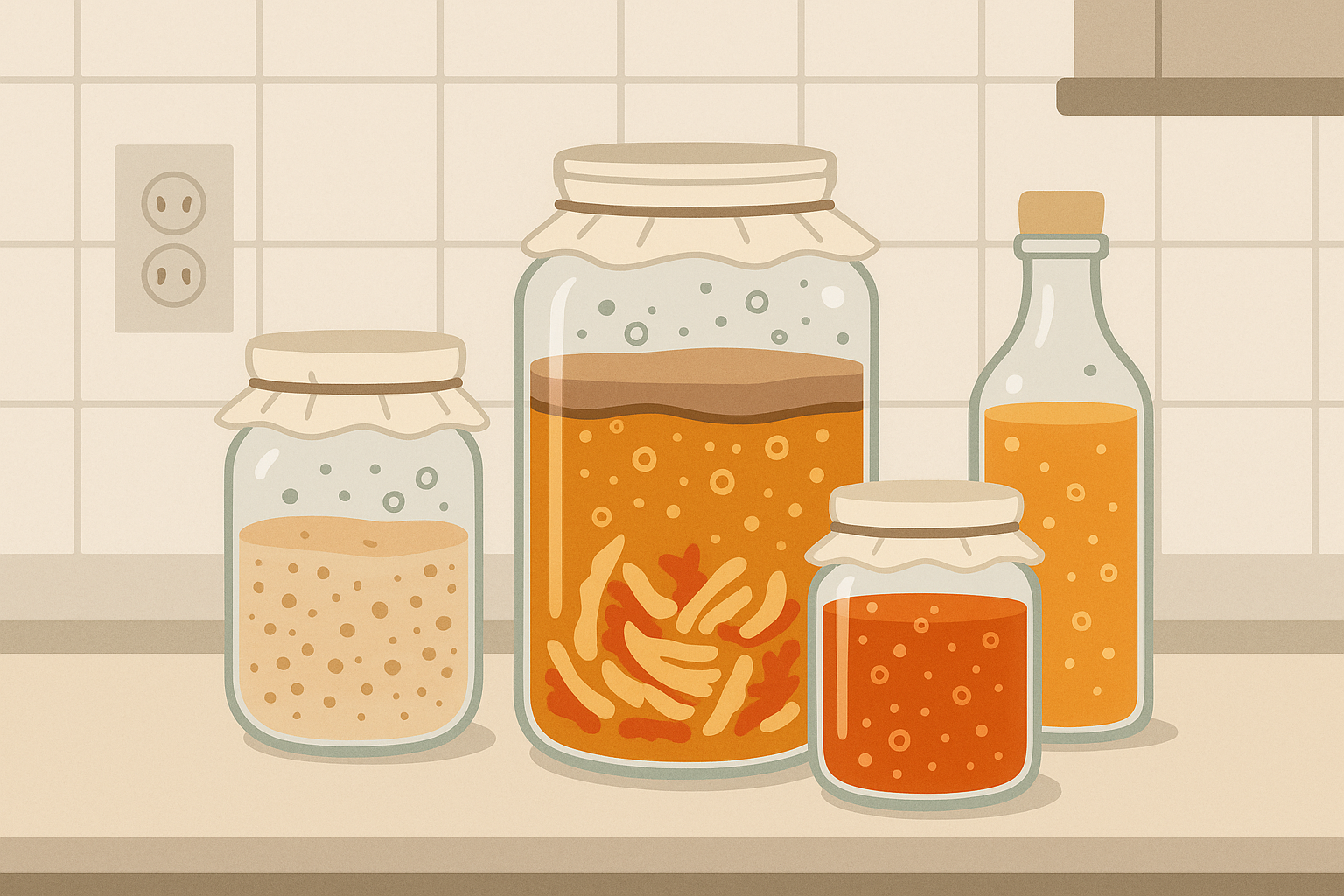
25. Molecular Gastronomy Home Plan
Monday becomes spherification night with those weird little food bubbles you see on cooking shows – olive oil caviar pearls, mozzarella spheres that burst in your mouth, and fruit caviar for dessert. Tuesday explores gelification through hot gazpacho that appears cold, edible cocktail garnishes, and transparent ravioli made with agar.
Wednesday focuses on foam and air – chocolate soil with edible flowers, carrot air foam, and levitating garnishes using magnetic plates. Each technique requires specialized equipment and precise measurements.
This pushes the boundaries of what’s possible in a home kitchen, requiring significant investment in both equipment and ingredients.
How These Plans Stack Up in Real Life
Not all meal plans are created equal. Here’s how they actually perform based on real-world testing and feedback from people who’ve tried these approaches.
| Plan Category | Time Investment | Budget Impact | Skill Level | Health Benefits | Social Flexibility |
|---|---|---|---|---|---|
| Simple Plans (1-5) | ⭐⭐⭐⭐⭐ | ⭐⭐⭐⭐ | ⭐⭐⭐⭐⭐ | ⭐⭐⭐ | ⭐⭐⭐⭐ |
| Health-Focused (6-10) | ⭐⭐⭐ | ⭐⭐ | ⭐⭐⭐ | ⭐⭐⭐⭐⭐ | ⭐⭐⭐ |
| Family-Friendly (11-15) | ⭐⭐⭐ | ⭐⭐⭐⭐ | ⭐⭐⭐ | ⭐⭐⭐⭐ | ⭐⭐⭐⭐⭐ |
| Specialty Diet (16-20) | ⭐⭐ | ⭐⭐ | ⭐⭐⭐⭐ | ⭐⭐⭐⭐⭐ | ⭐⭐ |
| Advanced Culinary (21-25) | ⭐ | ⭐ | ⭐⭐⭐⭐⭐ | ⭐⭐⭐ | ⭐⭐ |
Simple Plans (1-5) Reality Check:
- Time Investment: ⭐⭐⭐⭐⭐ (15 minutes or less per meal)
- Budget Friendly: ⭐⭐⭐⭐ (Uses affordable, accessible ingredients)
- Skill Level: ⭐⭐⭐⭐⭐ (Perfect if you’re just starting out)
- Family Friendly: ⭐⭐⭐ (Might need tweaks for picky eaters)
- Flexibility: ⭐⭐⭐⭐ (Easy ingredient swaps)
Health-Focused Plans (6-10) Reality Check:
- Time Investment: ⭐⭐⭐ (Requires some meal prep)
- Budget Impact: ⭐⭐ (Higher costs for organic, specialty ingredients)
- Skill Level: ⭐⭐⭐ (You’ll need some cooking skills)
- Health Benefits: ⭐⭐⭐⭐⭐ (Maximum potential for feeling better)
- Sustainability: ⭐⭐⭐⭐ (Good chance you’ll stick with it)
Family-Friendly Plans (11-15) Reality Check:
- Time Investment: ⭐⭐⭐ (Includes getting kids involved)
- Budget Friendly: ⭐⭐⭐⭐ (Designed with family budgets in mind)
- Skill Level: ⭐⭐⭐ (Manageable for busy parents)
- Family Harmony: ⭐⭐⭐⭐⭐ (Reduces mealtime battles)
- Nutritional Balance: ⭐⭐⭐⭐ (Sneaks good stuff into kid-friendly foods)
Specialty Diet Plans (16-20) Reality Check:
- Time Investment: ⭐⭐ (High planning and prep requirements)
- Budget Impact: ⭐⭐ (Specialty ingredients can get pricey)
- Skill Level: ⭐⭐⭐⭐ (Requires understanding dietary principles)
- Health Targeting: ⭐⭐⭐⭐⭐ (Highly specific benefits)
- Social Flexibility: ⭐⭐ (Can be challenging in social situations)
Advanced Culinary Plans (21-25) Reality Check:
- Time Investment: ⭐ (You’ll be in the kitchen A LOT)
- Budget Impact: ⭐ (Your grocery bill is going to hurt)
- Skill Development: ⭐⭐⭐⭐⭐ (Excellent for learning new techniques)
- Creativity: ⭐⭐⭐⭐⭐ (Maximum creative expression)
- Practicality: ⭐⭐ (Challenging for everyday implementation)

Which Plan Actually Fits Your Life?
The perfect meal plan exists where your dreams meet your reality. Choose based on where you are now, not where you think you should be.
Be brutally honest about how often you’re actually cooking right now. If you’re ordering takeout four nights a week, jumping into molecular gastronomy isn’t going to work. Start with simple meal plans and build complexity as habits get solid.
Think about your household’s pickiest eater when making decisions. The most nutritionally perfect meal plan fails if nobody will eat the food. Family peace often trumps nutritional perfection in sustainable meal planning.
Budget stuff deserves serious consideration beyond just ingredient costs. Factor in how much food you might waste while learning new techniques, equipment purchases for advanced meal plans, and time costs for complex preparation.
Seasonal changes keep meal plans fresh and affordable. Summer’s abundance of fresh produce supports different approaches than winter’s reliance on stored and preserved foods. Build flexibility into your chosen meal plan for seasonal ingredient swaps.
Have emergency backup strategies to prevent complete derailment during challenging weeks. Even advanced culinary meal plans need simple fallback options for illness, travel, or unexpected schedule changes.
Your meal planning becomes even more effective when you understand 5 prebiotic rich foods to eat for a healthy gut and why you need them to support your digestive health alongside your chosen approach.
How does Organic Authority support your meal planning journey? Their rigorous product vetting process takes the guesswork out of ingredient selection, especially crucial for health-focused and specialty diet meal plans. When you’re following anti-inflammatory protocols or managing food allergies, their “OA Approved” standards ensure you’re choosing ingredients that actually deliver on their promises.
The platform’s community-driven approach provides accountability and inspiration that individual planning often lacks. Their #OAWellnessRoutine creates connections with others navigating similar meal planning challenges, offering practical tips and emotional support when motivation wanes.
Building sustainable habits often requires understanding everything you need to know about intuitive eating to complement your structured meal plan approach with body awareness.
Ready to change your relationship with food? Start by choosing one meal plan that matches your current reality, not your ideal future. Success builds on consistency, not perfection.
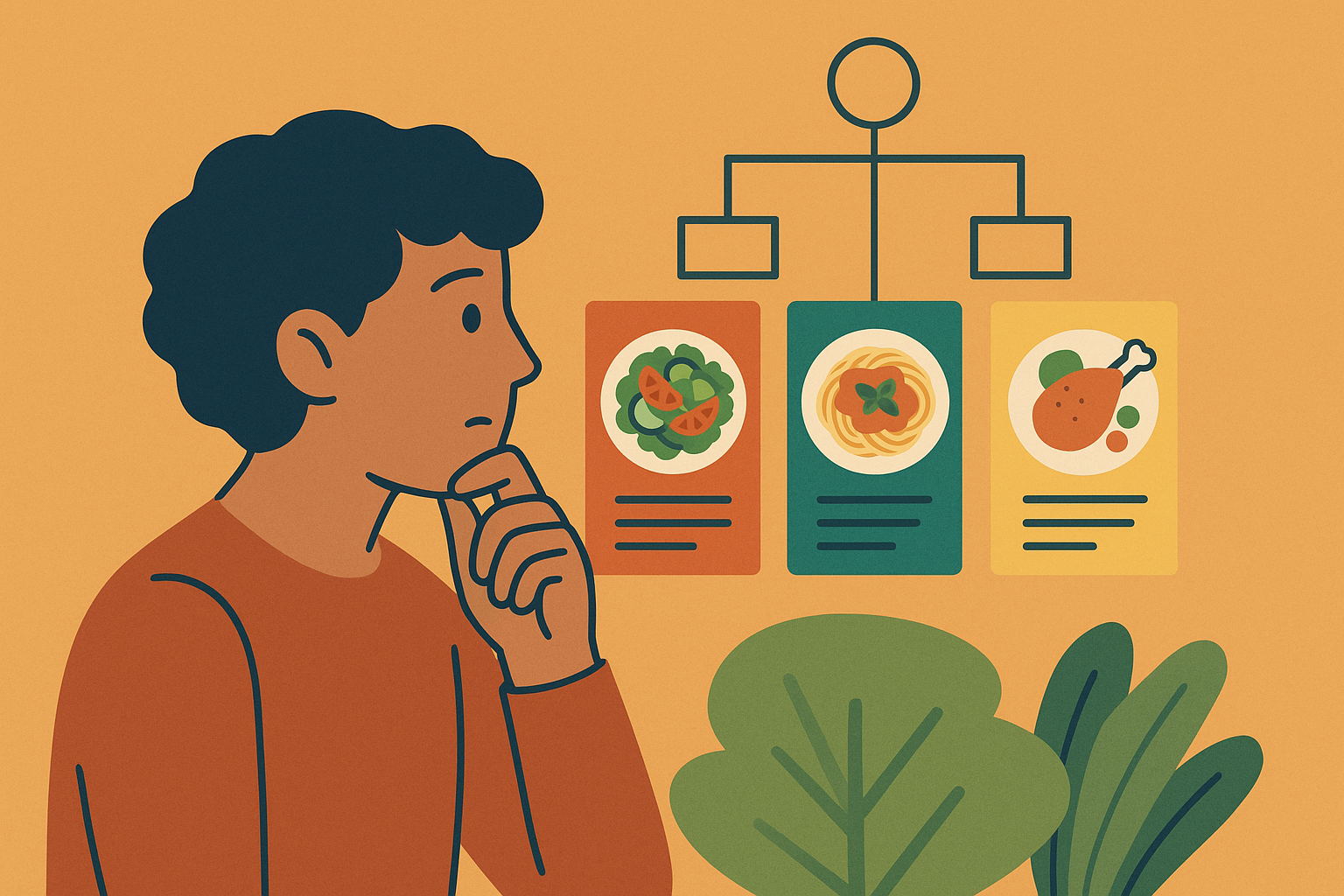
The Bottom Line
Meal planning success isn’t about finding the perfect meal plan – it’s about finding the plan that works for your actual life, not your imaginary one. Whether you start with 15-minute meals or dive into fermentation projects, consistency beats perfection every single time.
Your chosen meal plan will change as your skills, interests, and life circumstances change. The busy parent using hidden veggie strategies might eventually explore global cuisines when kids leave home. The college student mastering microwave meals could develop into a molecular gastronomy enthusiast years later.
Even the most sophisticated meal plan benefits from understanding master the art of plant based cooking with the five elements of flavor to enhance taste and satisfaction regardless of your chosen approach.
Look, every expert cook started with basic skills and simple recipes. Advanced culinary meal plans aren’t better than simple ones – they’re just different tools for different situations and goals. The best meal plan is the one you’ll actually follow consistently.
Food connects us to our health, our families, our communities, and our planet. Whatever meal plan you choose, you’re taking a step toward more intentional living. Your future self will thank you for starting today, regardless of which number you picked from this list.

